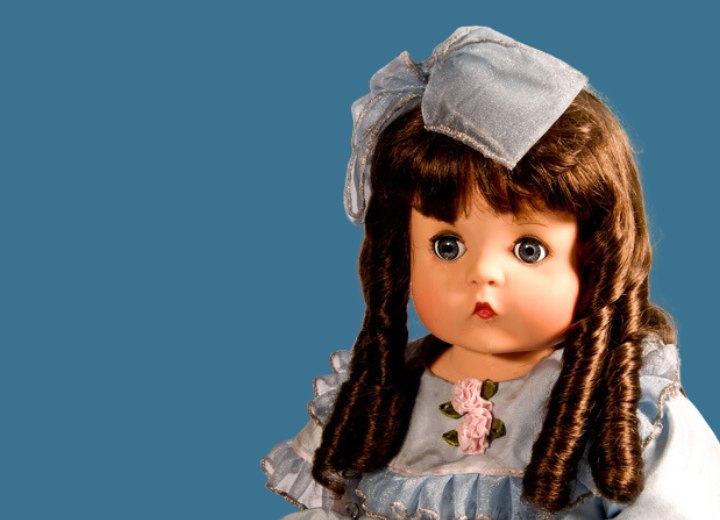Cleaning Doll Hair

If you are concerned about losing the value of your doll, seek a professional restorer. If you just want to clean up an old doll you found in a yard sale so your children can play with it, then we hope we can help.
#1 – When dealing with a doll made of wood, be cautious about what cleaning agents you use to clean the hair. Always remove the hair if possible (if the doll has a wig base) if you can't be sure that you don't use a cleaning agent that will damage the painted surface of the wood. And never let a wooden doll soak in any liquid, even if only the scalp area is submerged.
#2 – Similar cautions apply to dolls that are made from porcelain and other ceramic materials. Particularly if the bisque or porcelain is older, and shows crackling in the finish, do not soak the doll’s head in water. If the water manages to penetrate the finish, it could cause the interior to deteriorate and the doll would disintegrate from the inside out.
#3 – Be cautious of dolls with movable eyes that open and close. Keep any liquids from entering the doll's eyes, as moisture left in the eyes can cause mildew and mold to flourish. In general, it's a good idea to avoid letting the doll's head become submerged or any fluids to enter the head cavity for any reason. If this happens, and you can safely remove the head, do so and allow the head to dry thoroughly. If you cannot remove the head to allow air circulation, lay the doll face down onto a clean, absorbent cloth for several hours so that the moisture can be eliminated.

Caracul and Wool Hair:
Caracul and Wool are usually not attached with a wig base, but rather are glued directly to the head of the doll. Unlike other fibers used for doll hair, you do NOT want to use a liquid cleaner to clean caracul doll hair. Even water can be bad, as it can at least cause matting of the wool fiber, and at worst, loosen the adhesive of the glue.
Instead, use talcum or cornstarch in a light sprinkle into the hair and then use a fine, soft brush (like a clean toothbrush) to gently remove the powder from the hair.
Human Hair and Mohair:
These two fibers are generally treated the same way when it comes to cleaning. Even the methods of attachment to the head are usually the same. The hair is usually sewn to a wig base, and then the "doll wig" is glued to the doll's head. You want to carefully remove the wig base from the scalp.
Then use the end of a tail comb, a hairpin, or even an embroidery needle to carefully remove any snarls and tangles that may be present in the hair. If this is actually pulling hair out of the wig base, switch to a soft-bristled brush. Work from the ends of the hair to the wig base in order to remove the tangles and smooth the hair out. While you do this, be sure to remove any glue residue from the inside of the wig base using your fingernails or tweezers.
When it comes to cleaning the hair, soak the wig in a mild shampoo and cold water mixture. A few drops of shampoo in a pint of water is generally sufficient. Let it soak for 10-15 minutes then rinse the shampoo out of the hair by running cool water through the wig base and letting it run down the hair. It is important that at NO TIME do you ever “massage” the wig or attempt to lather the hair. Doing so will only cause knotting and matting of the hair.
Continue reading ...